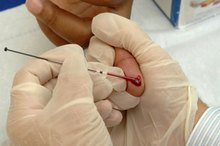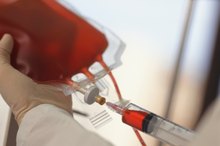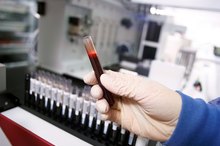About O Positive Blood
All blood is not created equal.
It all serves the body, it delivers oxygen and nutrients. It polices, attacking what it perceives to be invaders. But what it perceives to be invaders changes from person to person.
The immune system is complex, but it is based on recognizing certain proteins and removing those it does not recognize. What sets of proteins blood will remove determines blood type. There are three basic types of blood, A, B and O. With minor variations these combine to make 30 types of blood. Blood that is designated “O” is the most common among all people on the planet.
What Makes Blood "O"
O blood actually means the blood does not have the antigens of either A or B blood.
The opposite blood type has both antigens and is called AB. Antigens are the molecules that the body responds to by producing an antibody--a cell to destroy the antigen. There are some 600 antigens, but most are not significant to typing blood.
- O blood actually means the blood does not have the antigens of either A or B blood.
Positive or Negative
Difference Between O Positive & O Negative Blood
Learn More
Blood is designated as positive or negative. That depends on a one single protein, the D antigen, called the “Rh factor.” Rh factor used to be called the "Rhesus" factor, after monkey used to learn about this substance. It’s simple. If it is present, it is “Rh positive,” If that protein is not there, it is called “Rh negative.” This factor is significant in blood transfusions and conditions of the newborn.
- Blood is designated as positive or negative.
- That depends on a one single protein, the D antigen, called the “Rh factor.”
Blood Type and Genetics
Each of us got our blood type from our ancestors.
If both parents have the same type of blood, likely the child will have that blood type.
If the parent’s blood type differs, the children will have one or the other blood type or a combination.
For someone to have “O,” then either both parents had O blood, or their grandparents on both sides had type O such that the parents might be combinations such as AO or BO. Probability of parenthood can be indicated by blood type, but a DNA test is the only truly accurate test to determine paternity.
- Each of us got our blood type from our ancestors.
- If the parent’s blood type differs, the children will have one or the other blood type or a combination.
Positive is Good
Pros & Cons of Giving Blood
Learn More
Eighty-four percent of the population has a positive blood type. That makes positive blood easier to give and to get. If the mother's blood were positive and the fetus' blood were negative, there could be problems with a pregnancy. O positive blood is good because it doesn't have the limitations of O negative in that a person with O negative blood can only receive blood from another O negative, despite the fact they can donate their blood to just about everyone.
- Eighty-four percent of the population has a positive blood type.
- O positive blood is good because it doesn't have the limitations of O negative in that a person with O negative blood can only receive blood from another O negative, despite the fact they can donate their blood to just about everyone.
Giving Blood
Giving blood can save a life. Every healthy adult should consider giving blood. An adult has 10 to 12 pints of blood so giving a pint is not a problem in a healthy adult.
While all types of blood are needed, type O blood is the best to give. It does not have the proteins that can trigger an immune response from the blood recipient. Type O is called “universal donor” blood.
Blood cannot be manufactured and must come from a living donor. Blood can be donated through the American Red Cross and many local hospitals 1.
- Giving blood can save a life.
- While all types of blood are needed, type O blood is the best to give.
Receiving Blood
Certain medical conditions and severe trauma may necessitate receiving donor blood. Someone with AB blood type can receive blood from anyone. Their blood does not have the antibodies that will try to attack blood from others.
In contrast, people with O blood can only receive blood from other O donors. That would be more frightening except nearly 40 percent of the population of the world has type O blood.
- Certain medical conditions and severe trauma may necessitate receiving donor blood.
- In contrast, people with O blood can only receive blood from other O donors.
Related Articles
References
- American Red Cross: Blood Type
- The Biology Project: Blood Types Tutorial
- Sahu S, Hemlata, Verma A. Adverse events related to blood transfusion. Indian J Anaesth. 2014;58(5):543–551. doi:10.4103/0019-5049.144650
Writer Bio
Kathleen Northridge has been a professional, freelance, S.P.J.A award-winning writer since 1985. She has written for organizations as diverse as the American Cancer Society and Sign Business Magazine. She also has a background in research and education. She has a Bachelor of Arts from the University of California, San Diego.









